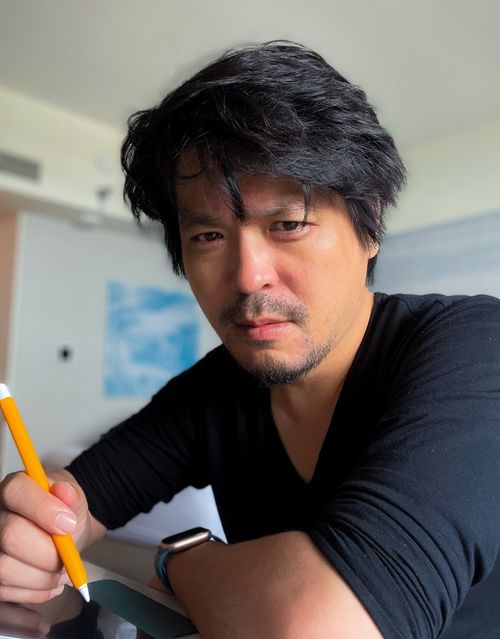
Illustrator, mecha designer, and visual artist, Hidetaka Tenjin draws box art for Hasegawa's Macross series, BANDAI SPIRITS' MG (Master Grade) series including Gundam, and Star Wars plastic models. He has also been active in the field of animation, drawing mechanical art, mechanical design, and image boards on many well-known anime including several Macross titles, Hellsing, and Star Blazers: Space Battleship Yamato 2205.
Ever since he was a child, Hidetaka loved to draw illustrations of ‘mecha’ ("メカ") from anime and films, such as Gundam and Star Wars. When Family Computer — now more widely known as the Nintendo Entertainment System — took the world by storm in the 1980s, he started drawing characters from Dragon Quest and other games, adding a more realistic style to the rough pixel art.
Hidetaka reflects, “For as long as I can remember, I have liked new things and things I had never seen before. The world of video games at that time was a world full of imagination created by young people. Perhaps I wanted to make them feel realistic.”
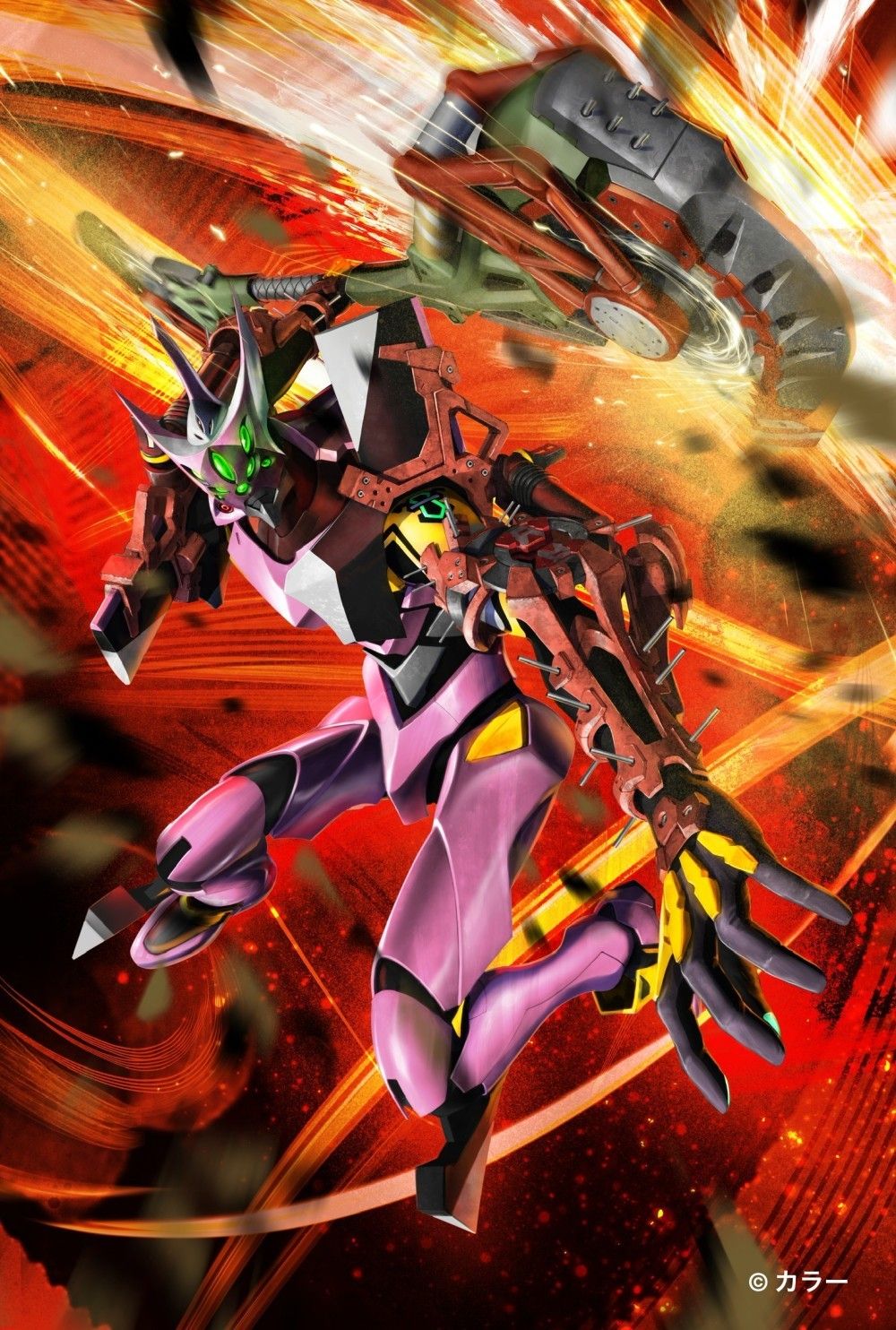
To some, a robot is a lifeless object; a cold lump of metal. But to Hidetaka, they're living things. “Metal is excavated from the ground and, from the standpoint of their origin on earth, humans and mechas are both natural. I think the appeal of mechas is not in the machines themselves, but rather how humans interact with them. Just as we cherish and wear jewelry given to us by someone, mechas are actually a collection of memories."
Fascinated by robots, Hidetaka majored in robotics at university. However, he struggled to find a job in the industry, which was still in its infancy. Making things worse, the economic bubble in Japan burst and what was known as the 'Employment Ice Age' began. He redirected his career path, utilizing his drawing skills, which he had continued to practice since he was a child.
After graduating from university, Hidetaka initially started working in 3D modeling. As he worked on key visuals, he began to ponder, "If I can draw, wouldn't it be more logical to draw from the beginning rather than take the time to create 3D images?" That was the turning point on his path to becoming an illustrator.
Hidetaka’s illustration process begins with a thorough investigation of the projects he’s working with. He learns about the historical background of the work, the music used, and anything else that helps discern what the fans love about it. Once he feels he has sufficient understanding, he devotes his skill and passion into each illustration, taking as much time as necessary to do justice to the project.
“A commercial drawing that lacks passion will be instantly spotted by the fans. An artwork that is satisfying [for fans] is ultimately the result of how much passion you pour into it. It’s just like love: how much love can you put into one person. I never do work that I am not passionate about and, as a result, I love all the work I am involved in.”
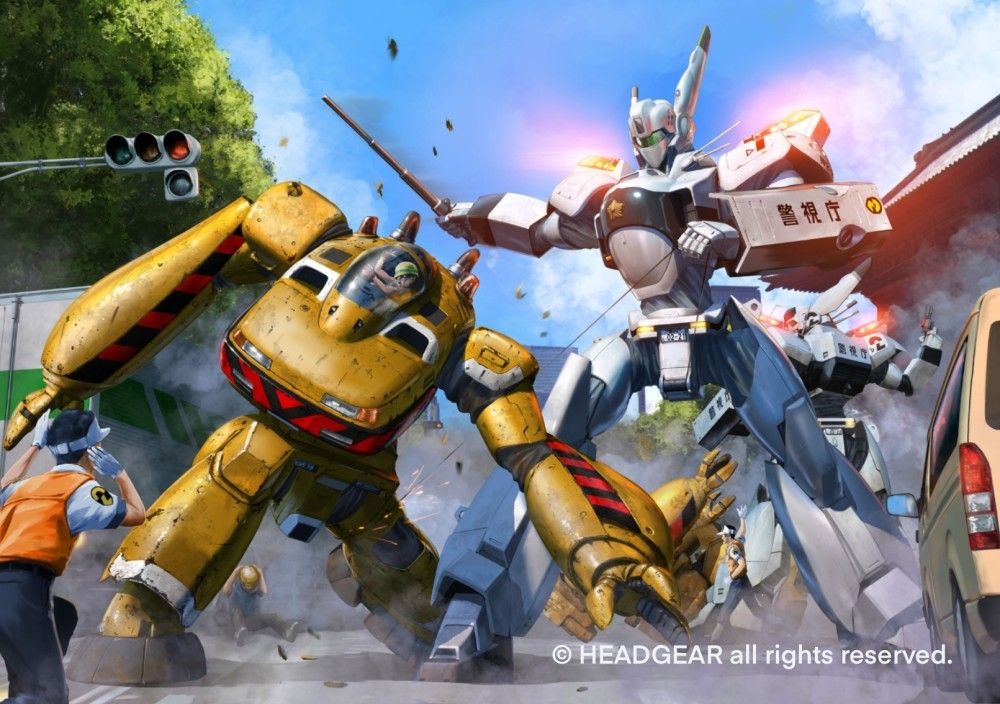
For Hidetaka, when drawing something that does not exist in the real world, the key is how carefully you draw the surrounding environment, incorporating familiar references.
“The unknown seems absurd, but by using something familiar, a ladder, for example, we connect it to the real world and it gives the illusion of physical existence. Taking the world of Godzilla as an example, the more carefully we create a miniature of the surrounding urban environment, the bigger and more real Godzilla becomes.”
Martial arts disciplines are another prominent reference for Hidetaka’s work. He has been learning since elementary school, and they have proven an illuminating and enjoyable way to appreciate different cultures. It also informed his understanding of human postures and body movement, which he applied to his drawing.
“Posing with a purpose, rather than simply doing a pose, dominates the space or the drawing. I learned a lot in drawing movements that convey what has happened and what is going to happen.”
Hidetaka used a drawing tablet when he started working as an illustrator. When Procreate was released in 2011, he immediately started using it, shifting from his tablet to iPad. “I instantly felt comfortable using Procreate when I first touched it. It brought back the fun feeling when I used paper and a pencil as a child. I love Procreate's simple user interface. And most of all: the drawing experience. The first time I used the Narinder pencil, I was shocked.”
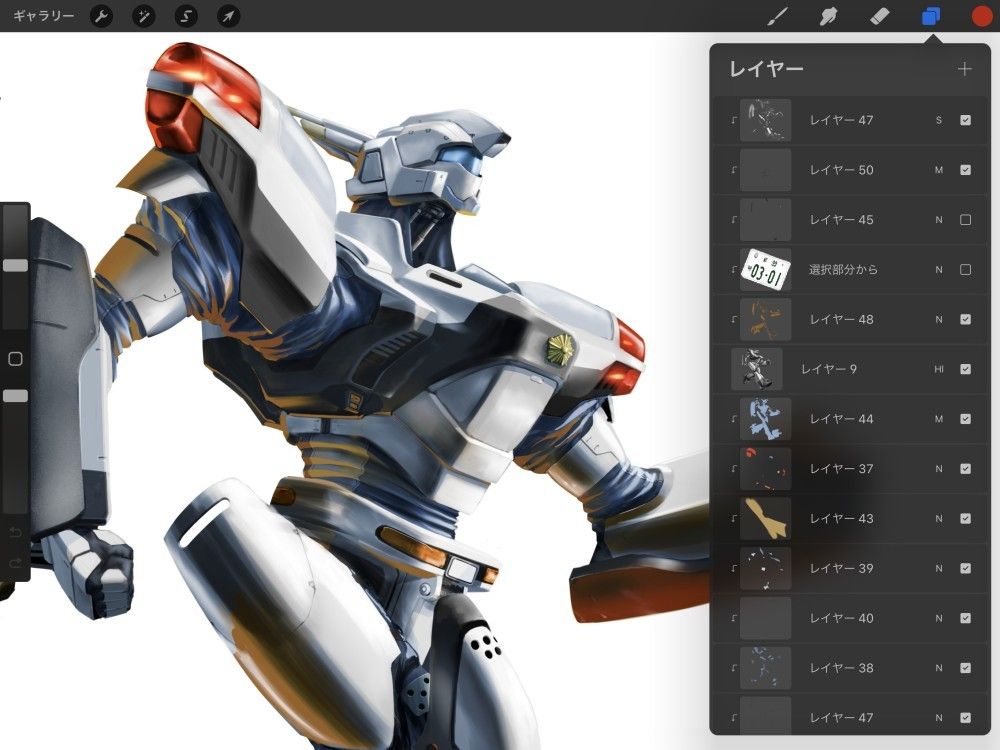
Hidetaka is now sharing praise of Procreate with directors and illustrators in the anime industry, as well as with his mentors. “When I show my custom Procreate brushes to professionals in the industry, they are amazed. When I draw a line, they say, ‘Wow!’ The better the artist, the more they understand the advantages of Procreate. I recommended Procreate to one of my mentors, Kazutaka Miyatake, who designed the Space Battleship Yamato. He is in his seventies, but he is a very good artist, so I think he will get the hang of it very quickly.”
Despite his success in illustration, Hidetaka has not abandoned his original passion for robotics. The industry has rapidly developed in recent years: cleaning robots and customer service robots in restaurants have become an increasingly familiar feature in our daily lives. In 2022, Hidetaka helped design SR-02, the world's first quadruped robot capable of carrying four people, which was developed by Sansei Technologies, Inc. He felt “full of emotion” when he rode on the robot after it was completed.
“I hope that the world will become a place where a greater diversity of designs can be actualized in the future. Until now, it has been the norm to design, mass-produce, and have everyone ride the same thing. But I feel that moving forward, the potential for hardware that can be customized to suit individual tastes and personalities is increasing exponentially.”
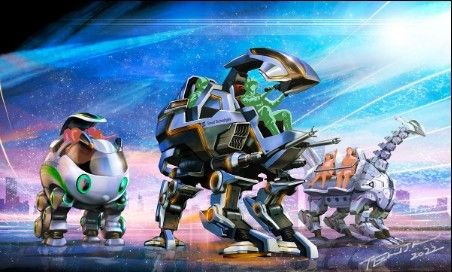
Looking to the future, Hidetaka says, “I would like to create something that transcends language, something that can be understood by everyone, everywhere, something that moves people, and something that makes their eyes sparkle. I don't know if it will be a drone or a new type of display, or exactly what it will look like, but I would like to challenge myself to create something that people have never seen before.
"I am also interested in the potential of digital art. It would be interesting if digital tattoos, makeup, hairstyles, clothing, and suchlike could be combined with digital art to express who you want to be and your personality depending on the day and time.”
He happily looks back on his life and observes, “I became the person I am today by pursuing what I love.”
It was impressive to see the excitement on Hidetaka’s face as he talked about the future. You can imagine it was the same energy and passion he had as a young boy, absorbed in drawing pictures of game worlds and robots. As he continues to fuse evolving technology with his passionate spirit of pursuit, what kind of artwork will he create in the future? We will keep a close eye on his developing craft.
You can see more of Hidetaka's work on his official website, Twitter, and Instagram accounts.